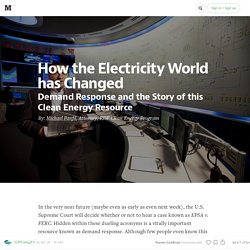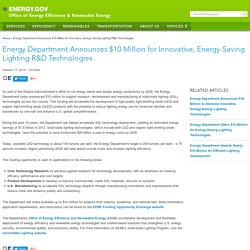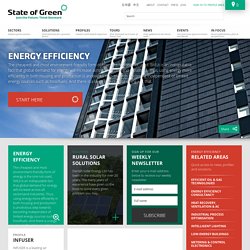

Demand Response-Electricity READ COMMENTS FOR SUMMARY. In the very near future (maybe even as early as even next week), the U.S.

Supreme Court will decide whether or not to hear a case known as EPSA v. FERC. Hidden within these dueling acronyms is a vitally important resource known as demand response. Although few people even know this tool exists, it invisibly benefits the life of many Americans. Simply put, demand response is an innovative tool that rewards people who use less electricity during times of peak, or high, energy demand. This may sound simple, but in a world where the arrow has pointed in one direction for over 100 years (from energy provider to user), saying it is a change from business as usual would be an understatement. As a result, demand response and a court case involving the clean energy resource, EPSA v. The agency behind the curtain The Federal Energy Regulatory Commission (FERC) sits in a nondescript building on a nondescript street in the heart of the Washington, D.C.
Which brings us back to FERC. Ynet. National Association of State Energy Officials. Energy Department Announces $10 Million for Innovative, Energy-Saving Lighting R&D Technologies. As part of the Obama Administration’s effort to cut energy waste and double energy productivity by 2030, the Energy Department today announced $10 million to support research, development and manufacturing of solid-state lighting (SSL) technologies across the country.

This funding will accelerate the development of high-quality light-emitting diode (LED) and organic light-emitting diode (OLED) products with the potential to reduce lighting energy use for American families and businesses by one half and enhance U.S. global competitiveness. During the past 10 years, the Department has helped accelerate SSL technology deployment, yielding an estimated energy savings of $1.8 billion in 2013.
Solid-state lighting technologies, which include both LED and organic light emitting diode technologies, have the potential to save Americans $26 billion a year in energy costs by 2030. This funding opportunity is open to applications in the following areas: Cleantech News — Solar, Wind, EV News (#1 Source) Israel Energy Forum. מוצרים ירוקים לבית ולגינה - neco. חדשות האנרגיה - חברות אנרגיה, אנרגיה מתחדשת, קונבנציונאלית, פוסילית. Office of Energy Efficiency & Renewable Energy. Rocky mountain institute.
Federal Energy Regulatory Commission. Energy Saver. Department of Energy. Welcome to ARPA-E. National Association of Energy Service Companies. IEA - International Energy Agency - affordable clean energy for all. Energy Efficiency. American Council for an Energy-Efficient Economy. Energy Efficiency. Saving energy in buildings Buildings account for 40 per cent of the global energy consumption and nearly the same share of CO2 emissions.Consequently, reducing the energy consumption of buildings will be a key priority for any country or community striving to save money and reduce CO2 emissions.

With today’s existing technologies, it is possible to reduce energy consumption in buildings by at least 50 per cent, and possibly as much as 80 per cent. These huge savings can be made quite easily with simple measures such as energy-efficient windows, insulation materials, heat regulators, ventilation systems and lighting,just to mention a few. Denmark has been a world leader in energy efficiency in buildings for decades and energy-efficient solutions are widely implemented in newly built and refurbished housing, offices and public institutions all over the country.
Optimising industrial processes Join the Future.
חברה לניהול התייעלות אנרגטית.